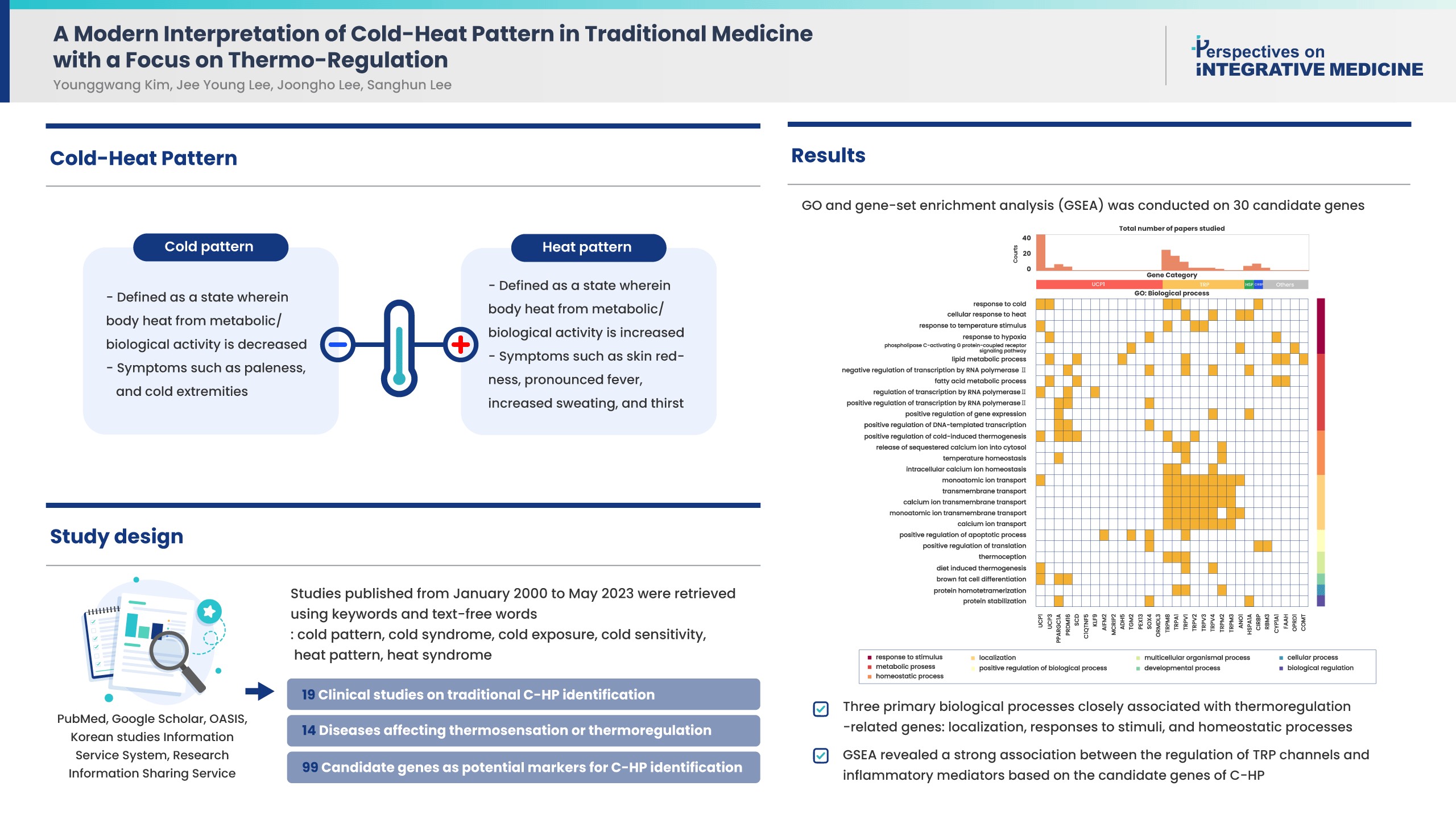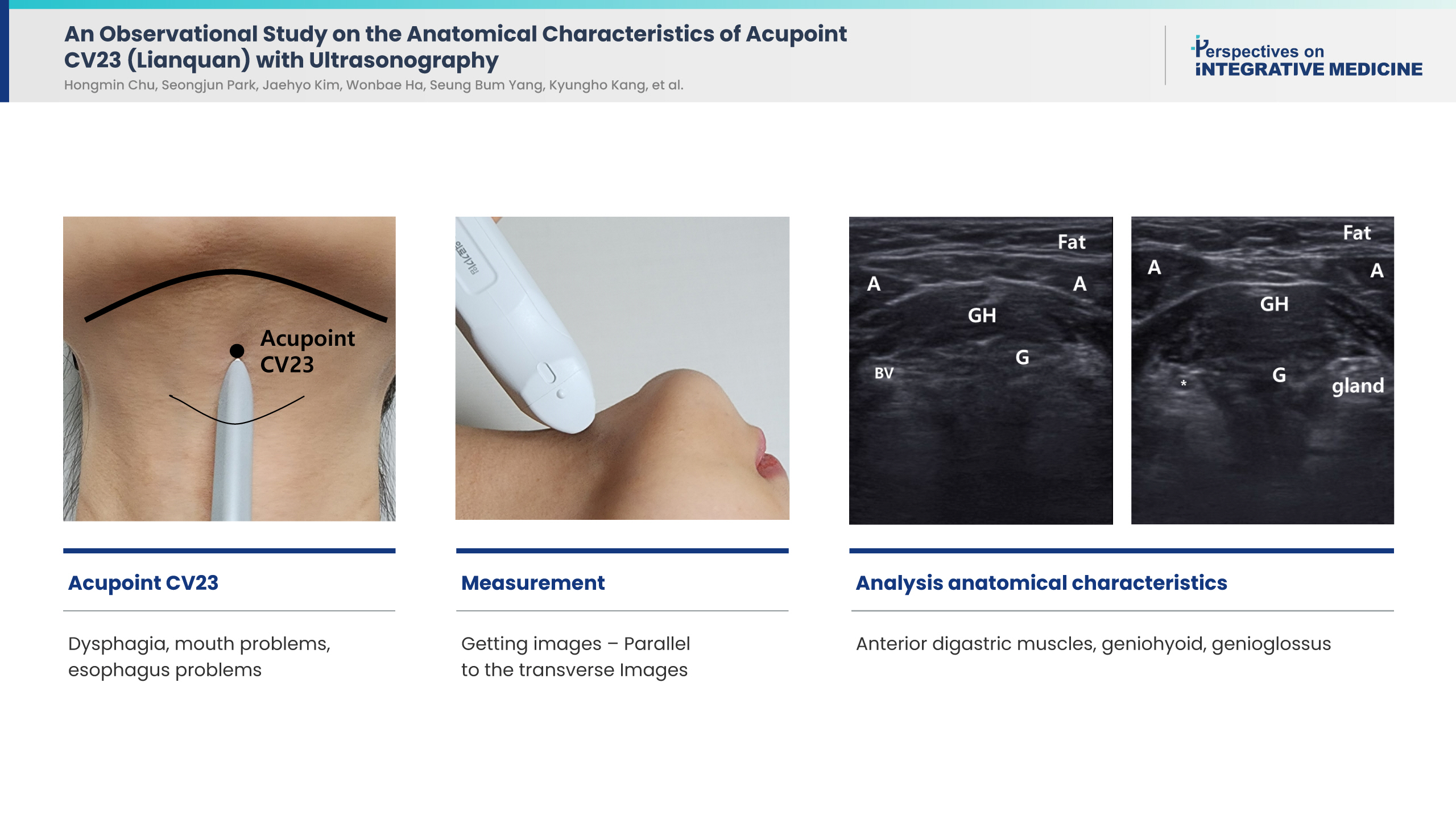- A Modern Interpretation of Cold-Heat Pattern in Traditional Medicine with a Focus on Thermo-Regulation
-
Younggwang Kim, Jee Young Lee, Joongho Lee, Sanghun Lee
-
Perspect Integr Med. 2024;3(1):18-28. Published online February 22, 2024
-
DOI: https://doi.org/10.56986/pim.2024.02.003
-
-
 Graphical Abstract Graphical Abstract
 Abstract Abstract
 PDF PDF Supplementary Material Supplementary Material
 - Cold-heat patterns (C-HPs) in Traditional East Asian Medicine are essential for individually diagnosing and treating patients. However, the concept of C-HPs and their biological mechanisms (thermoregulation) remains unclear. C-HPs studies published between January 2000 and May 2023 were retrieved from 5 databases (PubMed, Google Scholar, OASIS, Korean studies Information Service System, and Research Information Sharing Service). Among the 8,373 articles screened, 132 were included in the review and categorized. Nineteen articles were clinical studies related to traditional concept of C-HP identification, 14 studies investigated diseases affecting thermosensation or thermoregulation, and 99 studies identified candidate genes as potential markers for C-HP identification. Further analysis, including gene ontology, and gene set enrichment analysis of the candidate genes, revealed 3 primary biological processes closely associated with thermoregulation-related genes, including localization, responses to stimuli, and homeostatic processes. Notably there was a significant association between the candidate genes and inflammatory mediator regulation of transient receptor potential channels (p < 0.001). A significant association between C-HPs and inflammation-related pathways across thermosensation-related and thermoregulation-related clinical and preclinical studies was observed, suggesting that the traditional concept of C-HPs should be studied further from an immunological perspective.
- An Observational Study on the Anatomical Characteristics of Acupoint CV23 (Lianquan) with Ultrasonography
-
Hongmin Chu, Seongjun Park, Jaehyo Kim, Wonbae Ha, Seung Bum Yang, Kyungho Kang, Jongho Kim, Jungtae Leem, Sanghun Lee
-
Perspect Integr Med. 2023;2(1):49-55. Published online February 21, 2023
-
DOI: https://doi.org/10.56986/pim.2023.02.007
-
-
 Graphical Abstract Graphical Abstract
 Abstract Abstract
 PDF PDF
 - Background
Acupoint CV23 is one of the most commonly used acupoints for the treatment of post-stroke dysphagia and tongue pain. However, care must be taken during the procedure to consider the position of glands and blood vessels in the subcutaneous space of the acupoint. Needling depths to the geniohyoid muscle reportedly range from 0.4 to 3.3 cm. Using ultrasound imaging, we aimed to observe the anatomical characteristics around acupoint CV23 to derive a safe needling depth.
Methods
Ultrasound images of acupoint CV23 accessed from the Standard Ultrasound Image of Acupoint database were retrospectively analyzed for 30 participants aged in their 20s and 30s (15 male, 15 female), and the depth from the skin to the geniohyoid muscle was measured. Correlations between the needling depth and anthropometric factors (such as neck circumference) were analyzed.
Results
The average needling depth to the geniohyoid muscle was 1.59 ± 0.49 cm (male; 1.43 ± 0.52 cm, female, 1.75 ± 0.42 cm, p = 0.03). The geniohyoid muscle, anterior digastric muscles, and genioglossus muscle were observed in the subcutaneous area of acupoint CV23, and a risk of sublingual gland damage needs to be considered for oblique insertion of the acupuncture needle. No statistically significant correlations between the needling depth and anthropometric factors were observed.
Conclusion
Acupoint CV23 has a relatively shallow needling depth, and considering the presence of blood vessels and glands in the sublingual space, visualizing the surrounding anatomical structures using ultrasound was helpful to ensure safe needling practice.
|